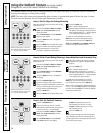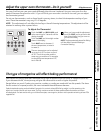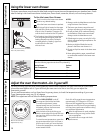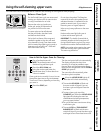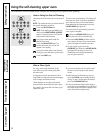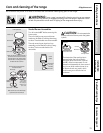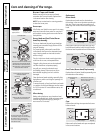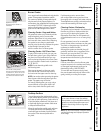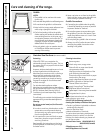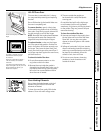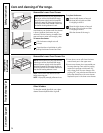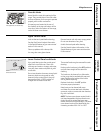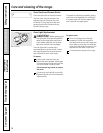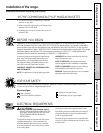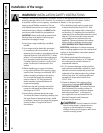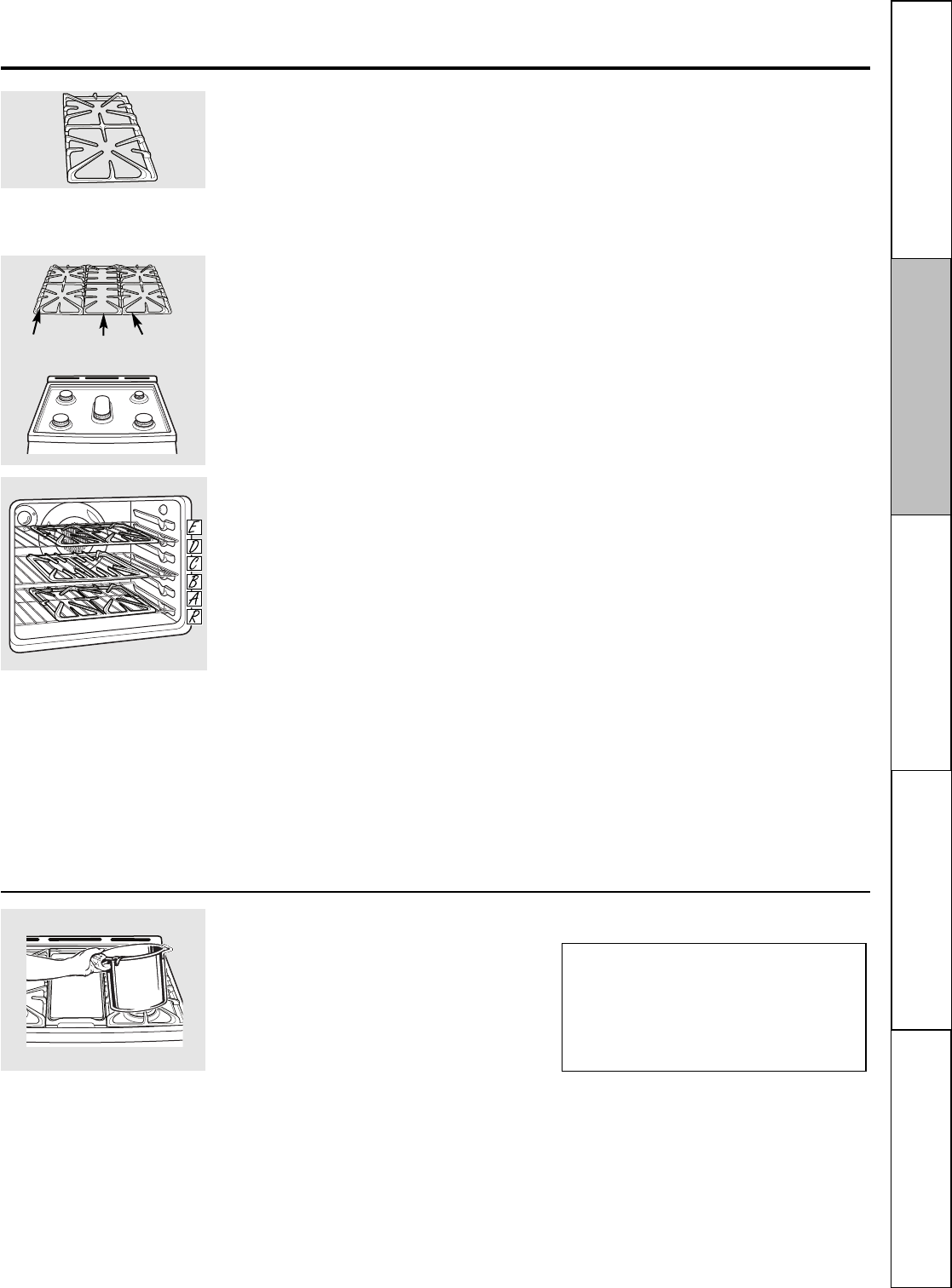
Consumer Support
Installation
Instructions
Troubleshooting Tips
Operating Instructions
Safety Instructions
33
G
EAppliances.com
Cooktop Surface
To avoid damaging the stainless steel surface
of the cooktop and to prevent it from becoming
dull, clean up spills right away. Foods with a lot
of acid (tomatoes, sauerkraut, fruit juices, etc.)
or foods with high sugar content could cause
a dull spot if allowed to set.
When the surface has cooled, wash and rinse.
For other spills such as fat spatterings, etc.,
wash with soap and water once the surface
has cooled. Then rinse and polish with a
dry cloth.
NOTE: Do not lift the cooktop. Lifting the cooktop
can lead to damage and improper operation
of the range.
NOTE: Do not store flammable materials
in an oven, drawer or near the cooktop.
Do not store or use combustible materials,
gasoline or other flammable vapors and
liquids in the vicinity of this or any other
appliance.
Burner Grates
Your range has three professional-style double
grates. These grates are position-specific.
For maximum stability, these grates should
only be used in their proper positions. For
c
onvenience, the undersides of the side grates
are marked “OUTSIDE.” Make sure the front
portion of both grates is in front. The center
grate can be interchanged front to back.
Cleaning Grates—Soap and Water
Lift grates out when cool. Grates should be
washed regularly and, of course, after
spillovers. Wash them in hot, soapy water
and rinse with clean water. When replacing
the grates, be sure they are positioned
securely over the burners. Replace the grates
so that straight lines are formed
with the center ribs of all three grates.
Cleaning Grates—Self-Clean Oven
To get rid of burned-on food, you may use
the self-clean cycle of your range. Remove
any burnt-on food particles that you can
prior to placing the grates in the oven. Place
the gray porcelain-coated racks in positions
“R”, “B” and “D”.
NOTE: Do not clean the griddle in the
self-cleaning oven.
Place one grate each on the oven racks
from side to side. Follow the instructions
for how to set the upper oven for cleaning.
NOTE: Use caution when removing the grates
from the oven after the self-clean cycle has
ended. The grates may still be hot.
For heavily-soiled grates, you may notice
some white ash on the grate. Wipe it off
with a damp cloth after the grate cools.
If white spots remain, remove them
with a soap-filled scouring pad and rinse
thoroughly with a vinegar and water mixture.
These deposits are usually a salt residue that
cannot be removed by the clean cycle.
Cleaning Grates—Dishwasher
The grates may be cleaned in the dishwasher.
Remove any burnt-on food particles that
you can prior to placing the grates in the
dishwasher. Place them on the lowest rack
of the dishwasher and run on a “heavy duty”
cycle.
Do not operate a burner for an extended
period of time without cookware on the grate.
The finish on the grate may chip without
cookware to absorb the heat.
Although the grates are durable, they will
gradually lose their shine, regardless of the
best care you can give them. This is due
to their continual exposure to high
temperatures and abrasion by the cookware.
Support Bumpers
If one or more of the circular silicone grate
support bumpers in the cooktop are missing
or damaged, replacement parts can be
obtained by calling 1.800.GE.CARES.
To insert the new bumpers, simply insert
the cone shaped end and push down while
gently twisting or rocking the bumper.
The grates may be cleaned in a
dishwasher.
Appearance may vary.
Outside
grate
Outside
grate
Center
grate
The oven has 5 rack positions.
Place the gray porcelain-coated racks
in positions “R”, “B” and “D” for self-
cleaning the grates. Place one grate
each on the oven racks from side to
side.




